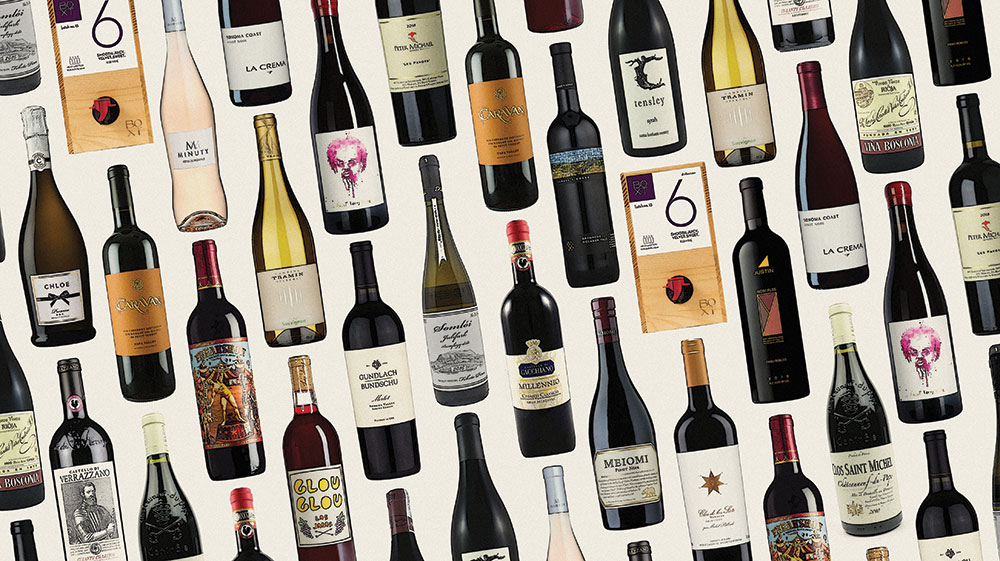A study of late 20th-Century wine label design by people who don’t know very much about wine or graphic design
We asked one of the world’s foremost wine label designers to identify some of the most influential wine labels in history. He was too busy trying to make heads or tails out what this current era of label design represented—with everything from metallic embossed sugar skulls to skateboard photography to full paper wraps like giant Worcestershire bottles to working tachometers adorning wine bottles—to be able to provide much insight. But he did leave us with a couple of fuzzy-animal inspired wine mascots to hang our tour through vino-related graphic design on before laying down and muttering “the horror, the horror,” like Kurtz in Apocalypse Now.
Château Mouton Rothschild
In 1945, the famed French Château began commissioning artists to create art for its labels each vintage, giving them free reign and utilizing the label for marketing in a manner that hadn’t been attempted before. The list of artists would eventually include Miró, Chagall, Picasso, Warhol, Dali and Koons. The practice is one that is more popular than ever, with many wineries today creating limited-edition labels for a particular vintage.
1940s
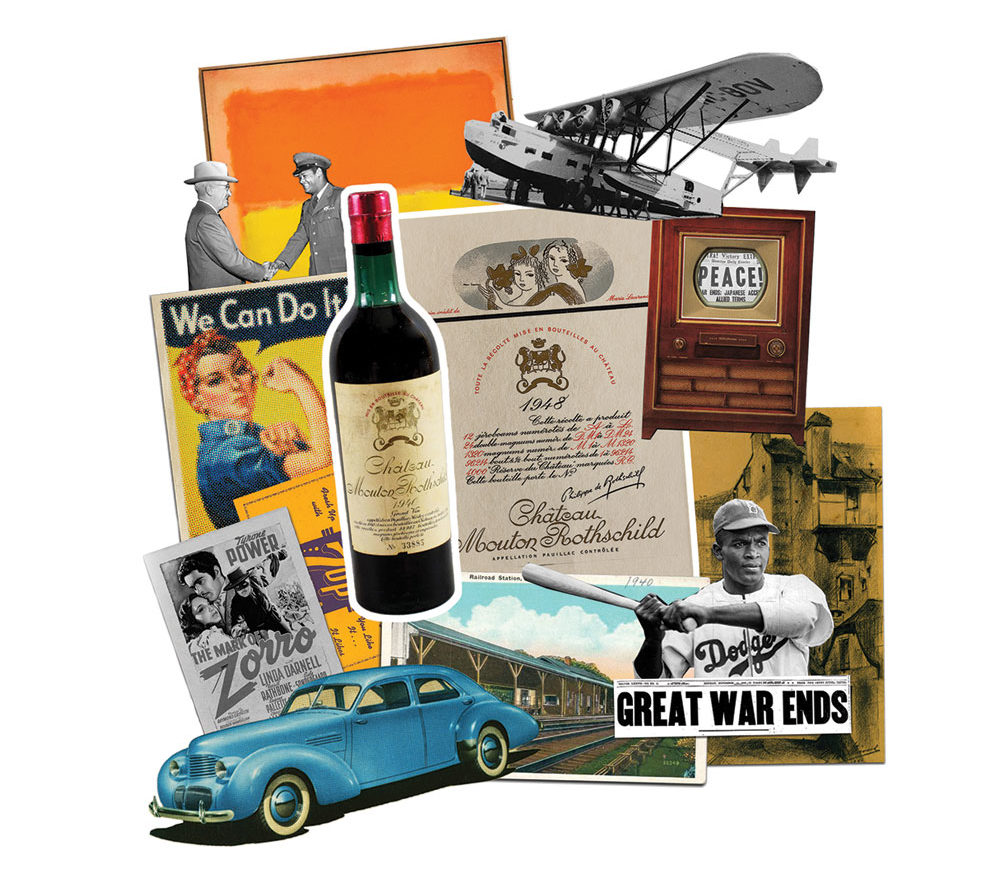
Château Mouton Rothschild
In 1945, the famed French Château began commissioning artists to create art for its labels each vintage, giving them free reign and utilizing the label for marketing in a manner that hadn’t been attempted before. The list of artists would eventually include Miró, Chagall, Picasso, Warhol, Dali and Koons. The practice is one that is more popular than ever, with many wineries today creating limited-edition labels for a particular vintage.
Château Latour
Château Latour’s Grand Vin label has changed little since the 19th Century. It’s plain-spoken and clear and a holdover of early label design that consisted of little more than the name of the winery and vintage.
Château Margaux
The name of the winery and a romantic drawing of the estate. The standard.
1950s
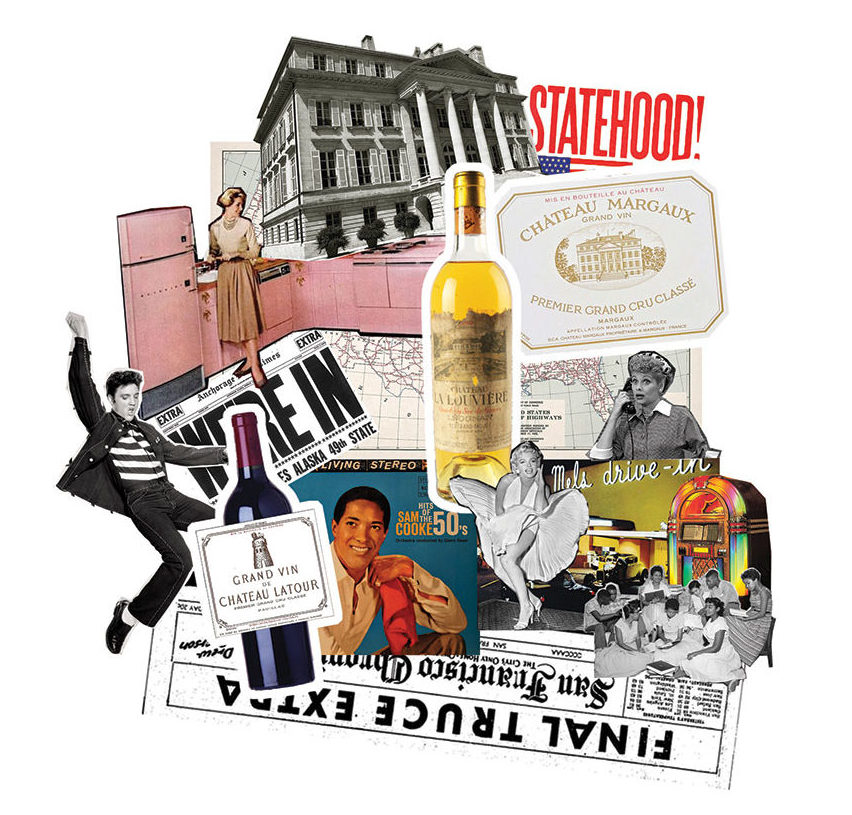
Château Latour
Château Latour’s Grand Vin label has changed little since the 19th Century. It’s plain-spoken and clear and a holdover of early label design that consisted of little more than the name of the winery and vintage.
Château Margaux
The name of the winery and a romantic drawing of the estate. The standard.
Château Pétrus
The art for the iconic label, commissioned by Madame Loubat when she took over the winery in the late 1940s, depicts St. Peter holding the key to the gates of heaven. The wine soared in popularity in the ’50s and ’60s leading many to emulate its label format. It didn’t hurt at all that Francophile John F. Kennedy was a vocal fan.
Blue Nun
With its odd image of nuns picking grapes and indecipherable-to-Americans German words on the label, this wine came to epitomize what most Americans thought of resiling—namely weird, cheap and sweet. Nonetheless, the wine enjoyed enormous popularity in the US through the ’80s as an affordable wine, but in the ’60s a bottle might fetch as much as a decent Bordeaux.
1960s
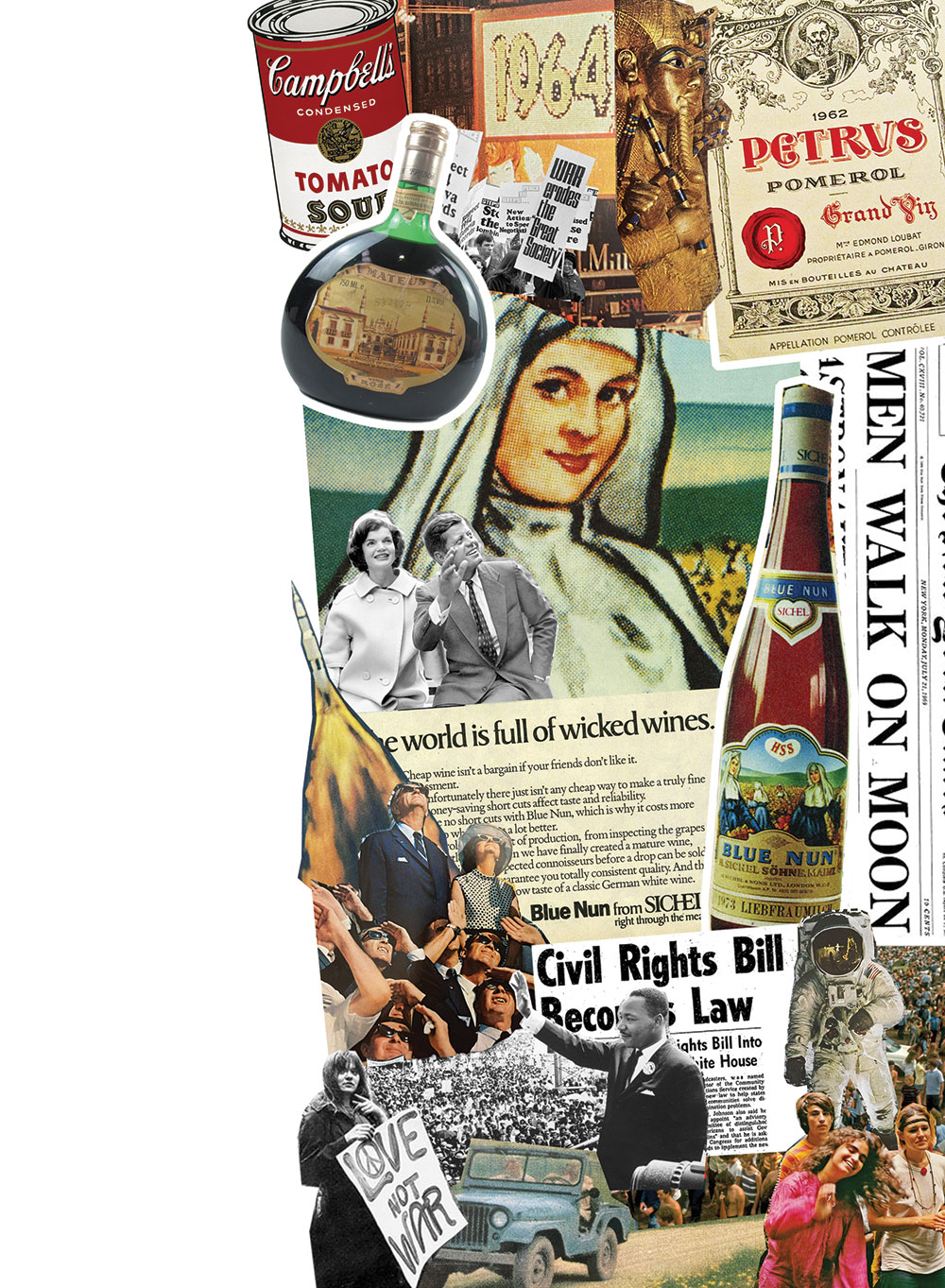
Château Pétrus
The art for the iconic label, commissioned by Madame Loubat when she took over the winery in the late 1940s, depicts St. Peter holding the key to the gates of heaven. The wine soared in popularity in the ’50s and ’60s leading many to emulate its label format. It didn’t hurt at all that Francophile John F. Kennedy was a vocal fan.
Blue Nun
With its odd image of nuns picking grapes and indecipherable-to-Americans German words on the label, this wine came to epitomize what most Americans thought of resiling—namely weird, cheap and sweet. Nonetheless, the wine enjoyed enormous popularity in the US through the ’80s as an affordable wine, but in the ’60s a bottle might fetch as much as a decent Bordeaux.
Riunite
Call it an affront to traditional producers in Emilia-Romagna, Italy, if you want, but a cooperative of nine of the region’s producers formed a collective that became Riunite, and the squat bottles of sweet, fizzy stuff dominated the US as the No. 1 imported wine in the decade of disco. The reign lasted 25 years. Some people still have flashbacks when they hear “Riunite on ice. Riunite so nice.” The relatively restrained white label with a blandly generic drawing of a winery and catchy advertising promising a sophisticated European life of leisure belied the fact that there was basically an alcoholic soft drink inside the bottle.
Carlo Rossi
Gallo had been bottling jug wine since the ’50s and its Carlo Rossi brand dates back to that time, but in the mid-’70s it became ubiquitous, with Carlo Rossi himself’s (yep, he’s a real guy) recognizable smiling visage appearing on great big glass jugs with a single-finger loops by the tens of millions.
1970s
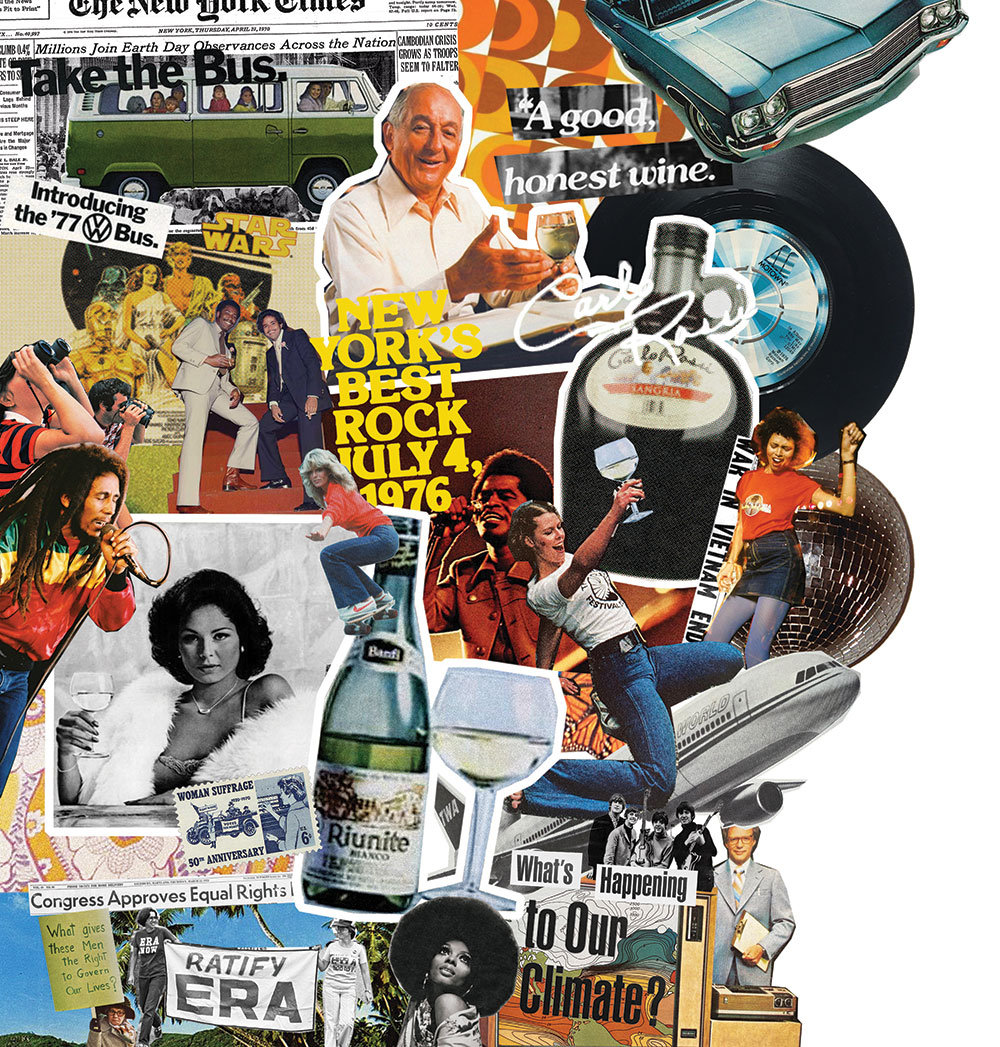
Riunite
Call it an affront to traditional producers in Emilia-Romagna, Italy, if you want, but a cooperative of nine of the region’s producers formed a collective that became Riunite, and the squat bottles of sweet, fizzy stuff dominated the US as the No. 1 imported wine in the decade of disco. The reign lasted 25 years. Some people still have flashbacks when they hear “Riunite on ice. Riunite so nice.” The relatively restrained white label with a blandly generic drawing of a winery and catchy advertising promising a sophisticated European life of leisure belied the fact that there was basically an alcoholic soft drink inside the bottle.
Carlo Rossi
Gallo had been bottling jug wine since the ’50s and its Carlo Rossi brand dates back to that time, but in the mid-’70s it became ubiquitous, with Carlo Rossi himself’s (yep, he’s a real guy) recognizable smiling visage appearing on great big glass jugs with a single-finger loops by the tens of millions.
Sutter Home
The late 1970s were an exciting time in Napa Valley—it made its entrance onto the world stage after The Judgement of Paris, for one, and it was an era when Sutter Home might label a California “Burgundy.” Then came White Zinfandel, which owned the ’80s in a category Sutter Home created.
Mondavi
Robert Mondavi set out to show that California could produce far better wine than the syrupy-sweet jug wine coming out of Modesto and the oceans of White Zinfandel flooding the market. He sought to make European-level fine wine and the labels followed suit. By the 1980s, American supermarkets were ready for both.
1980s
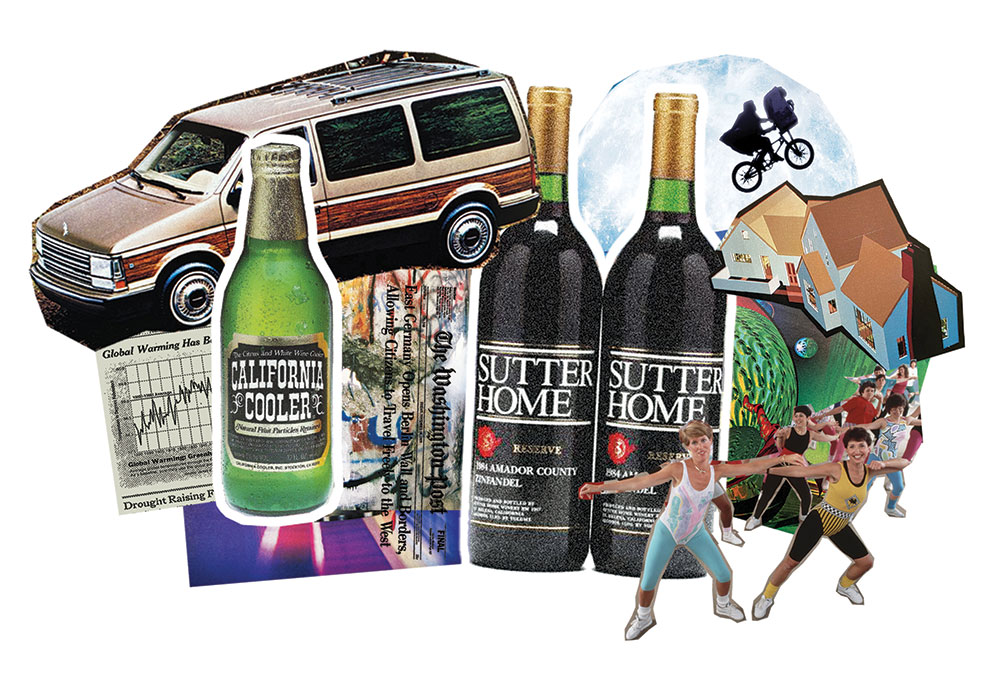
Sutter Home
The late 1970s were an exciting time in Napa Valley—it made its entrance onto the world stage after The Judgement of Paris, for one, and it was an era when Sutter Home might label a California “Burgundy.” Then came White Zinfandel, which owned the ’80s in a category Sutter Home created.
Mondavi
Robert Mondavi set out to show that California could produce far better wine than the syrupy-sweet jug wine coming out of Modesto and the oceans of White Zinfandel flooding the market. He sought to make European-level fine wine and the labels followed suit. By the 1980s, American supermarkets were ready for both.
Ravenswood
Joel Peterson’s labels were at once iconic and contemporary. The entwined raven’s circle logo looked fairly traditional on a bottle, but also made for the perfect temporary tattoo swag for a generation raised on Lollapalooza tribalism.
Gundlach Bundschu “Bearitage”
When this historic family brand, which dates back to the 1850s and is still run by the Bundschu Family to this day, sought to modernize its look, it went with an affable cartoon bear guzzling red wine from a goblet and let the symbol of California make a good dad joke pun on “Meritage.” Not to mention presaging the whole animal-label craze.
1990s
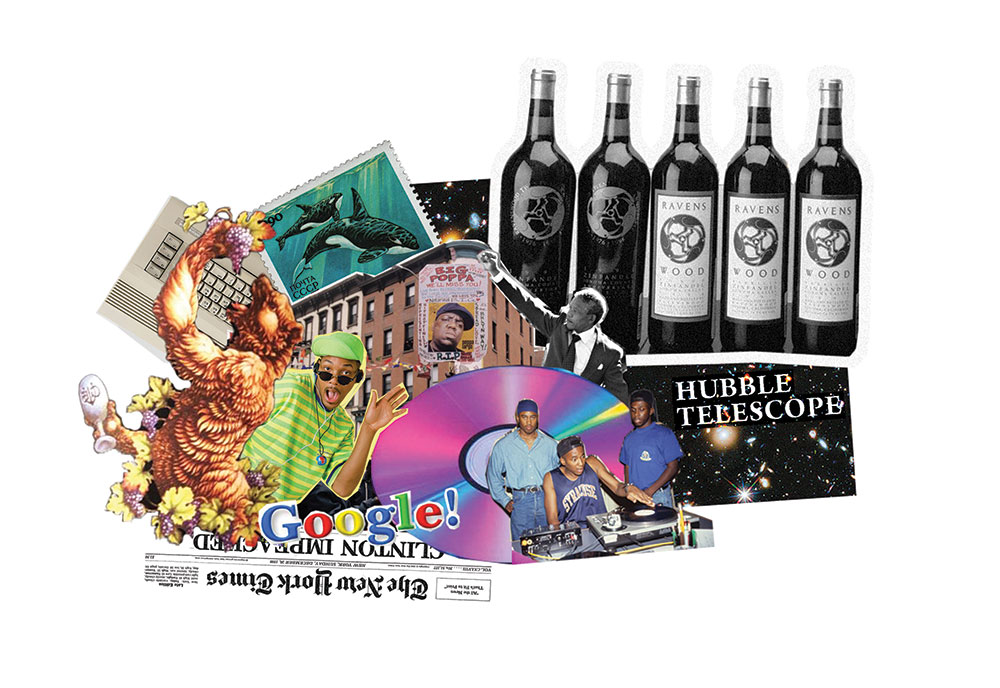
Ravenswood
Joel Peterson’s labels were at once iconic and contemporary. The entwined raven’s circle logo looked fairly traditional on a bottle, but also made for the perfect temporary tattoo swag for a generation raised on Lollapalooza tribalism.
Gundlach Bundschu “Bearitage”
When this historic family brand, which dates back to the 1850s and is still run by the Bundschu Family to this day, sought to modernize its look, it went with an affable cartoon bear guzzling red wine from a goblet and let the symbol of California make a good dad joke pun on “Meritage.” Not to mention presaging the whole animal-label craze.
Fat Bastard
Arguably, the racy name of this French wine brand might have had as much to do with the attention it received as its hippo mascot. Nonetheless, in fairly short order animal-adorned labels were everywhere. See also: Smoking Loon, Toad Hollow, Toasted Head, Rex-Goliath and, of course…
Yellow Tail
Might be hard to imagine but, this now very familiar Aussie wine with jumping kangaroo front and center debuted in only 2001. That year it sold 200,000 cases. The next year its kangaroo jumped to 2.1 million cases sold.
2000s
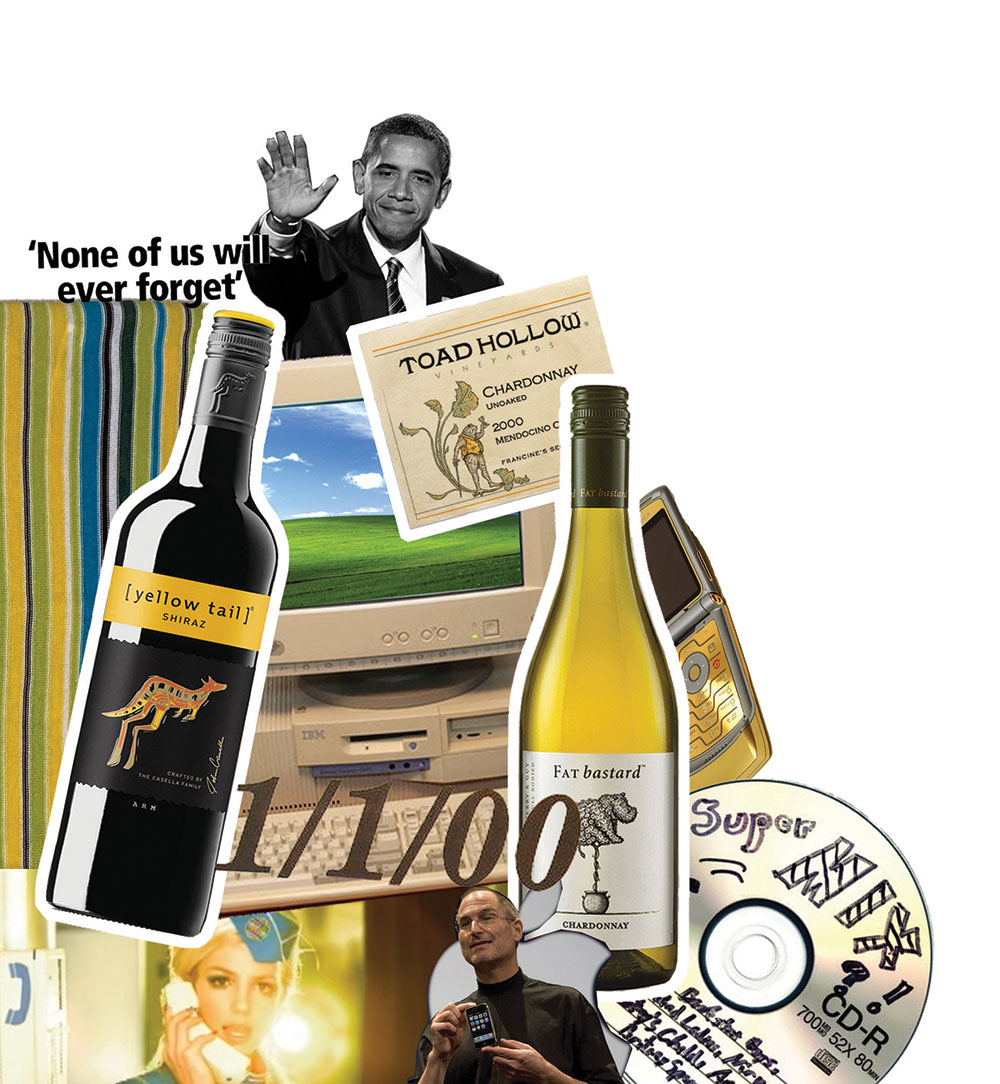
Fat Bastard
Arguably, the racy name of this French wine brand might have had as much to do with the attention it received as its hippo mascot. Nonetheless, in fairly short order animal-adorned labels were everywhere. See also: Smoking Loon, Toad Hollow, Toasted Head, Rex-Goliath and, of course…
Yellow Tail
Might be hard to imagine but, this now very familiar Aussie wine with jumping kangaroo front and center debuted in only 2001. That year it sold 200,000 cases. The next year its kangaroo jumped to 2.1 million cases sold.
The Prisoner
Say what you will about their wines, and opinions are decidedly mixed, but after Orin Swift showed that you could just about bottle prune juice and people will buy it if it’s got a label they like with The Prisoner, the game changed.
2010s
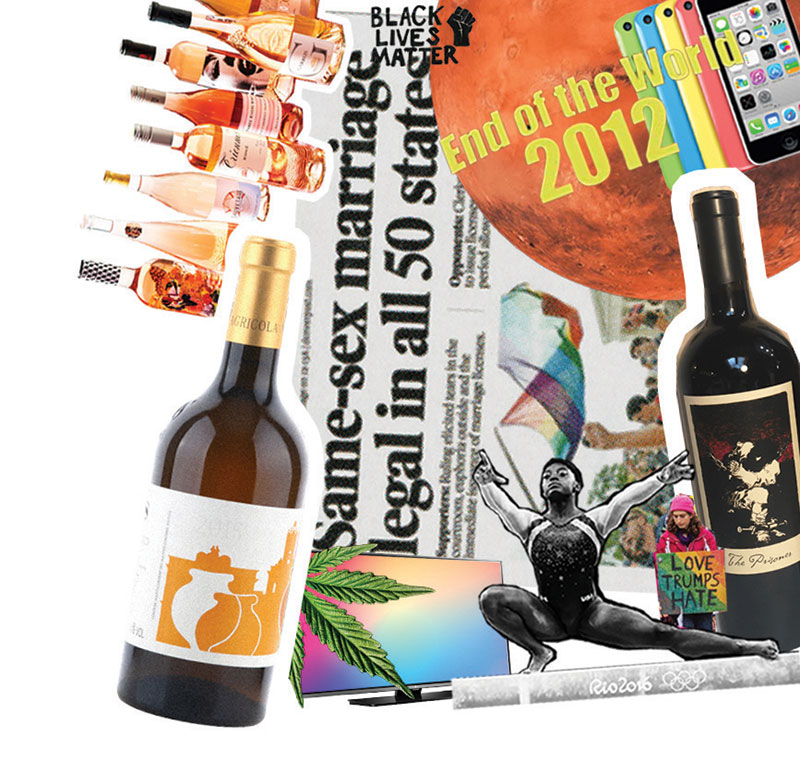
The Prisoner
Say what you will about their wines, and opinions are decidedly mixed, but after Orin Swift showed that you could just about bottle prune juice and people will buy it if it’s got a label they like with The Prisoner, the game changed.

